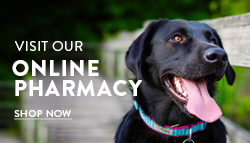Blog

Parvo is a very infectious viral disease in dogs. Parvo or canine parvovirus normally comes in two diverse forms. These are intestinal and cardiac diseases. The intestinal form of the disease is the most common. It infects puppies that are between six weeks to six months old.
The cardiac form of the disease is the least common of the two ailments. It is a terminal disease that affects the heart muscles of puppies that are under the age of eight weeks.
How Dogs Contract the Disease
Parvo is a disease that affects puppies when they come in contact with a dog with the infection. They can also get it when they step or ingest feces from a sick dog. Since the disease is highly contagious, it can spread to your puppy when you touch a sick one. They can also get the disease from other objects that have come in contact with the virus. The infection can also pass from mother to puppy if she has the virus.
On infection, the virus travels to the lymph nodes near your puppy’s throat. The lymph nodes are part of the animal’s immune system. They have lymphocytes that are the target of the virus. Here they multiply and enter your dog’s bloodstream. The lymphocytes die after getting the infection.
The parvovirus then heads for the bone marrow. The bone marrow is responsible for producing white blood cells. The attack on the bone marrow weakens the puppy’s immune system as there is no production of white blood cells.
Symptoms of Parvo
Symptoms of intestinal parvo begin to show from three to 10 days after the infection. Some of the symptoms evident in your puppy include:
Vomiting
Dehydration
Fever
Chronic Weight loss
Bloody diarrhea
Loss of appetite
Low body temperature
Weakness
Rapid heart rate
Lethargy
Discomfort or pain
Redness around the mouth and eyes
Most adult dogs do not show any of these symptoms of parvo. However, you must take your dog to the vet immediately you notice any of these symptoms. This is because parvo has a 90 percent mortality rate if you delay treatment.
Prevention Measures
The most ideal methods of preventing infection are through vaccination and proper hygiene. It is important to take your puppy as early as possible. As they grow, you must keep their parvo vaccination injections up-to-date.
The vaccinations are important even though your puppy gets its immunity from the mother. Take your dog for its first vaccination when it is between six to eight weeks old. This is usually after weaning. The next two booster injections will continue at three-week intermissions.
Always be cautious about the places that you take your dog for walks. This is because it is unsafe for them to mingle with other pets that may have contagious infections.
Treatment
The ideal treatment of the parvovirus involves controlling the symptoms. This involves controlling nausea, constant hydration, and controlling stomach pains. It is best to admit your dog to the vets for constant observation during medication and injections. The recovery process is long and it is best to dial down your dog’s movement during this time. Please note that your dog’s disease is infectious for up to six weeks after diagnosis.
To know if your dog has parvo, visit Bergen County Veterinary Center at our office in Waldwick, New Jersey. You can also call 201-205-2500 to book an appointment today.






